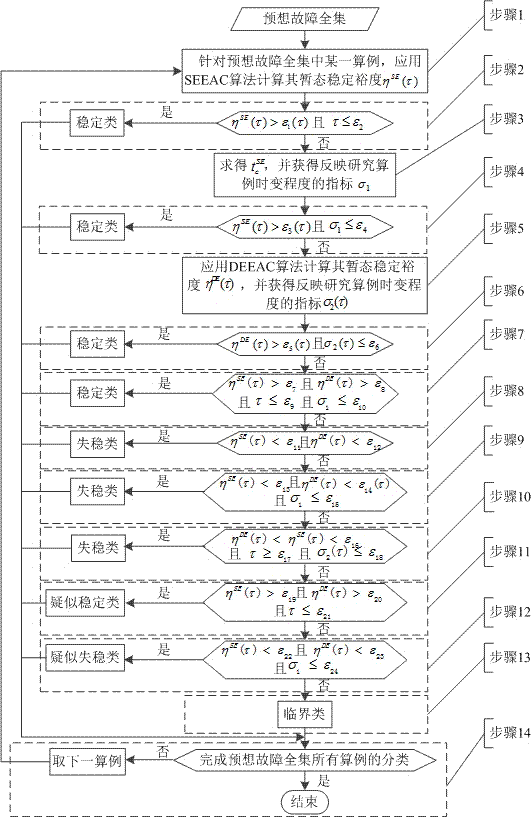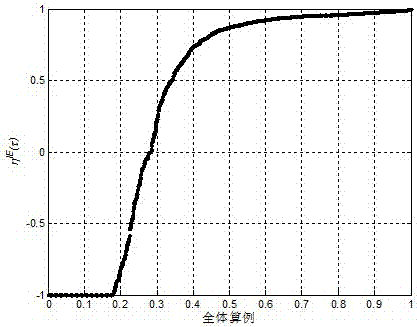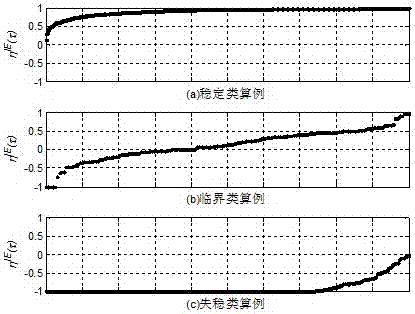A Fast and Robust Classification Method for Predicted Faults in Power System Transient Stability Assessment
A transient stability evaluation and fault prediction technology, which is applied in electrical digital data processing, special data processing applications, instruments, etc., can solve problems such as classifier design robustness defects, achieve fast and strong classification, and reduce the number of calculation examples.
- Summary
- Abstract
- Description
- Claims
- Application Information
AI Technical Summary
Problems solved by technology
Method used
Image
Examples
Embodiment Construction
[0052] The present invention will be described in further detail below with reference to the accompanying drawings and examples.
[0053] figure 1 Step 1 in the above describes that after the example classification process is started, a certain example is taken from the complete set of expected faults, and the SEEAC algorithm is used to calculate the temporary stability margin of the example.
[0054] figure 1 Step 2 in the above describes the identification rule 1 of the stability calculation example. If the calculation example is calculated by the SEEAC algorithm to calculate the stability margin η SE (τ) is greater than the threshold ε 1 (τ), and its fault clearing time τ is less than or equal to the threshold ε 2 , identify it as a stable case, and go to step 14, otherwise go to step 3.
[0055] figure 1 Step 3 in the above discloses a calculation method that reflects the time-varying degree of the research example: apply the SEEAC algorithm to obtain the critical cle...
PUM
 Login to View More
Login to View More Abstract
Description
Claims
Application Information
 Login to View More
Login to View More - R&D
- Intellectual Property
- Life Sciences
- Materials
- Tech Scout
- Unparalleled Data Quality
- Higher Quality Content
- 60% Fewer Hallucinations
Browse by: Latest US Patents, China's latest patents, Technical Efficacy Thesaurus, Application Domain, Technology Topic, Popular Technical Reports.
© 2025 PatSnap. All rights reserved.Legal|Privacy policy|Modern Slavery Act Transparency Statement|Sitemap|About US| Contact US: help@patsnap.com



